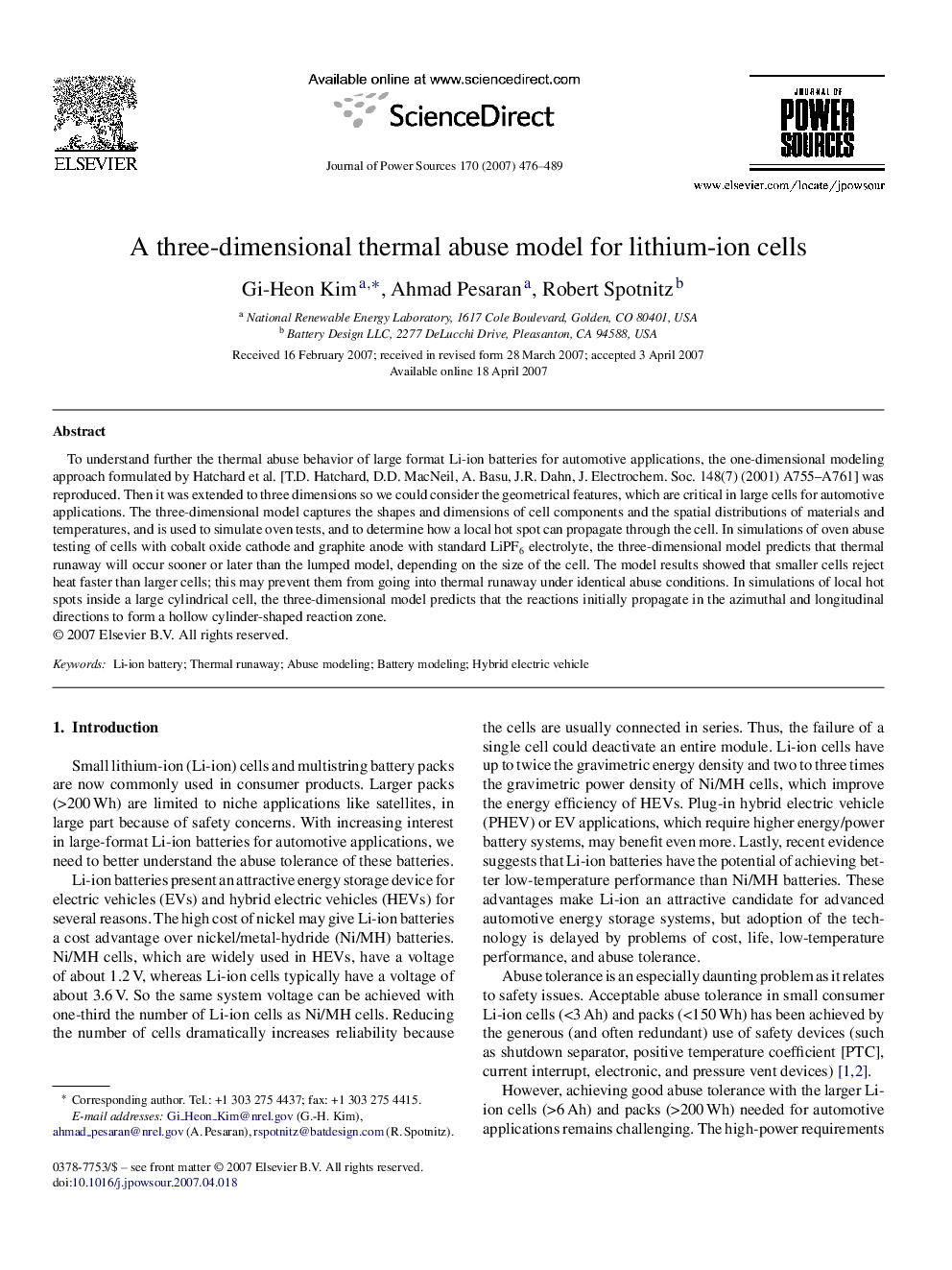| Article ID | Journal | Published Year | Pages | File Type |
|---|---|---|---|---|
| 1290660 | Journal of Power Sources | 2007 | 14 Pages |
To understand further the thermal abuse behavior of large format Li-ion batteries for automotive applications, the one-dimensional modeling approach formulated by Hatchard et al. [T.D. Hatchard, D.D. MacNeil, A. Basu, J.R. Dahn, J. Electrochem. Soc. 148(7) (2001) A755–A761] was reproduced. Then it was extended to three dimensions so we could consider the geometrical features, which are critical in large cells for automotive applications. The three-dimensional model captures the shapes and dimensions of cell components and the spatial distributions of materials and temperatures, and is used to simulate oven tests, and to determine how a local hot spot can propagate through the cell. In simulations of oven abuse testing of cells with cobalt oxide cathode and graphite anode with standard LiPF6 electrolyte, the three-dimensional model predicts that thermal runaway will occur sooner or later than the lumped model, depending on the size of the cell. The model results showed that smaller cells reject heat faster than larger cells; this may prevent them from going into thermal runaway under identical abuse conditions. In simulations of local hot spots inside a large cylindrical cell, the three-dimensional model predicts that the reactions initially propagate in the azimuthal and longitudinal directions to form a hollow cylinder-shaped reaction zone.
